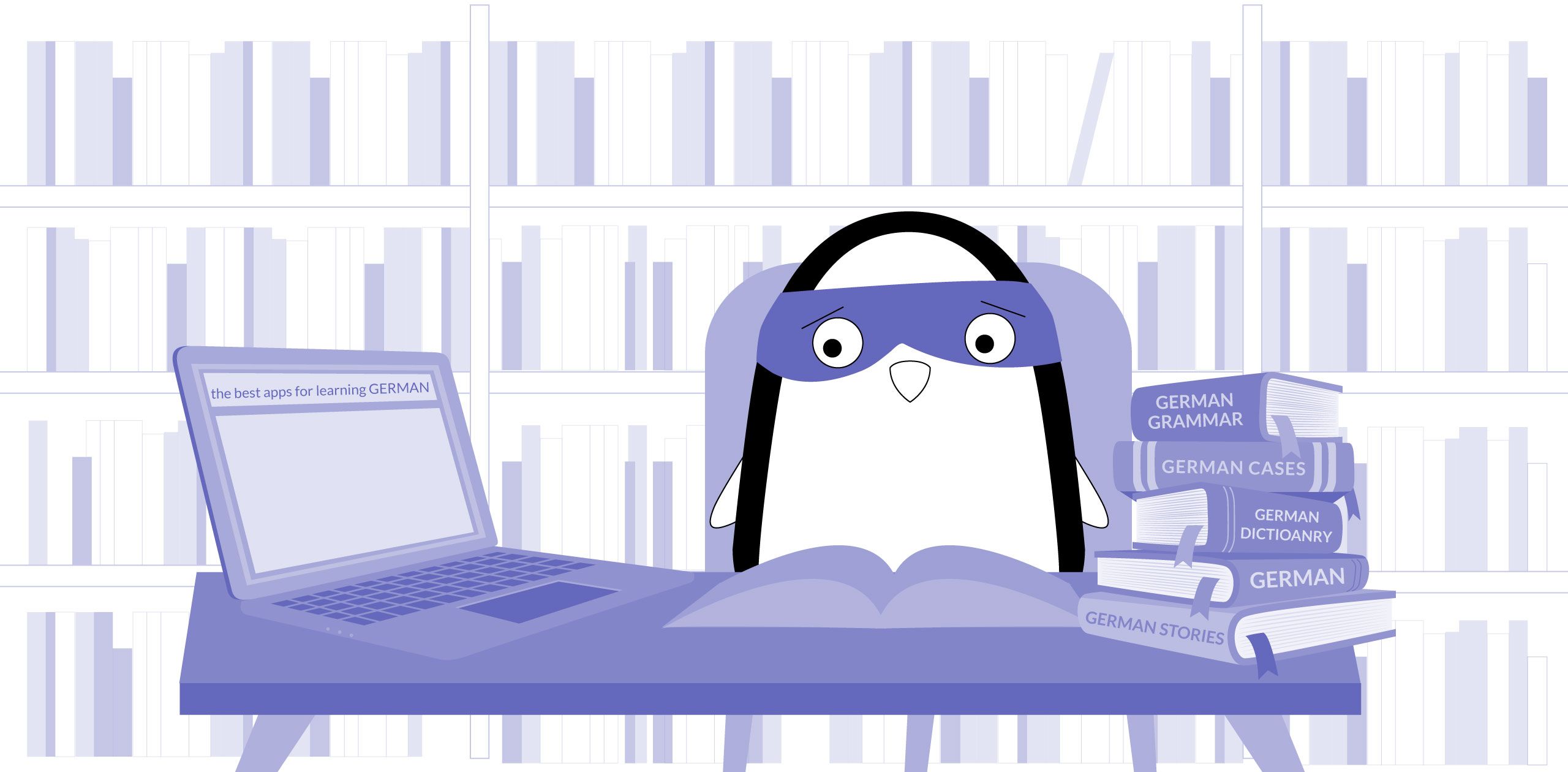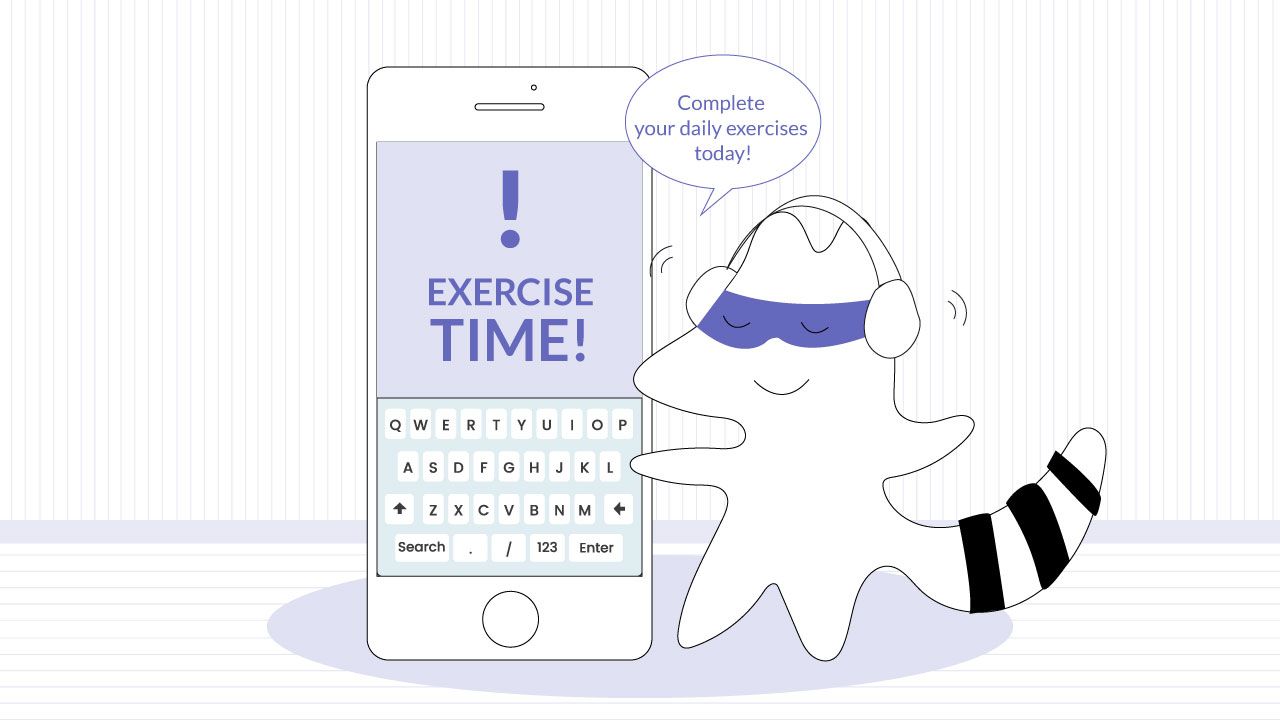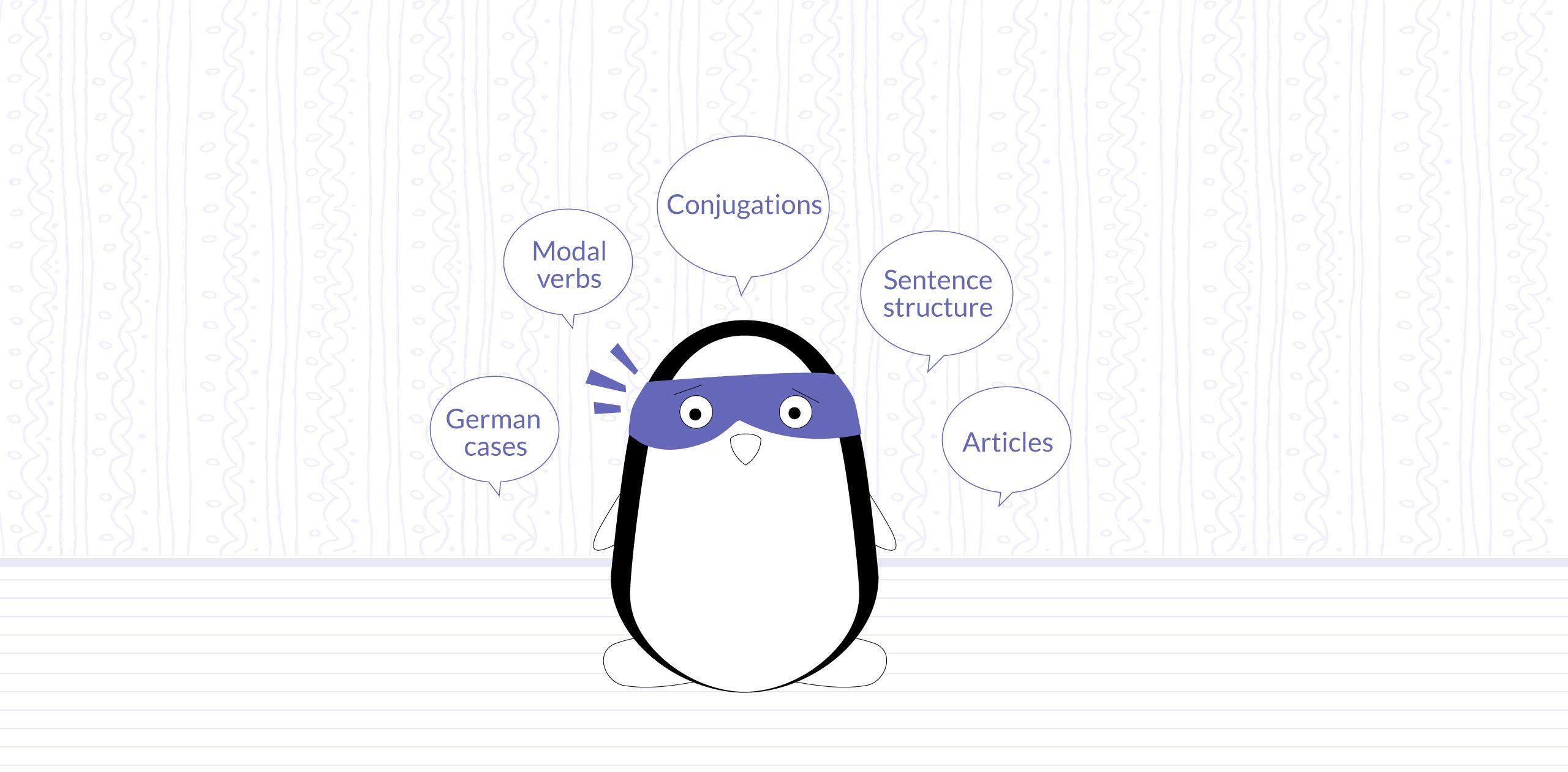
While some people may prefer learning languages by attending a class in person, others find that using an app is more convenient or fits better into their schedule. After all, there are so many apps today available for people of all ages, interests, and levels. Whether you’re a fan of learning with stories, classic lessons, or podcasts – there’s an app for you somewhere.
So, no matter what your current level of German knowledge is, you should be able to find a platform that works well for you – but this can take ages sometimes. To make your life easier, we’ve prepared this short list.
Here, we explore all the pros and cons of the most popular apps for learning German. Read on, and discover which does what – and who knows, maybe you’ll find your perfect learning tool today.
Learn German with Langster
But First: Why You Should Try Langster
What Is It?
Langster is a relatively new language-learning app on the market, but it has already proven itself to be one of the most interactive tools. Langster offers short lessons for beginners and intermediate learners based on fun, bite-sized stories from around the world.
This app focuses on language immersion and helps you stay motivated for longer while learning German.
Pros
We are working all the time on adding new helpful features, but there are already some important details that will make your learning experience as smooth as possible.
- Langster uses a story-based learning approach combined with spaced repetition method and flashcards. This helps you learn new words in context as well as recall what you’ve already learned.
- Each story comes with a quiz to check your reading comprehension and ensure that you understood it well enough.
- New stories are added to the app every day, which means that you will never get tired or bored with old content.
- We add audio generated by native speakers to our stories, so you can listen to the words being pronounced out loud with the correct accent.
- We provide short, bite-sized grammar highlights for every story so that you can discover new structures but don’t get drowned in the amount of it.
- To learn new words, you can access our built-in language dictionary by clicking on anything you didn’t understand.
Cons
- Our app is relatively new, so we are still figuring out potential difficulties you might experience and fixing them as the app develops.

Price
Although Langster is free, there are some paid features available. A pro plan will allow you to get access to an unlimited number of stories daily, but the free version still has all that is necessary for learning.
You can consider one of the two paid options we provide: a monthly subscription or an annual one. You can also check out our trial version first - 7 days of each plan are free.
Who Is It For?
Langster is perfect for beginning and intermediate learners who want to get a good learning foundation in a fun way. It should also be good for more advanced leaders who want to improve their reading, listening, and vocabulary skills.
Duolingo
What Is It?
Duolingo is one of the most popular language-learning apps on the market today. It can be used to learn a variety of different languages, including German. The app uses a variety of methods to help students learn, including flashcards, exercises, and quizzes. The main idea behind Duolingo is the gamification of the learning process.
The app advertises helping students learn German language quickly, in a fun way, while keeping their motivation high. Let’s see how that works out in reality.

Pros
Duolingo is a very popular app for a reason – it has many pros. The main one is the way this app tries to make the process of learning German as exciting as possible.
- The process is gamified to keep your motivation high. You can earn points and level up by completing lessons and maintaining your daily studying streaks.
- The design is pretty clear and very cute, helping you feel like you’re using a game and not a German language-learning app. The interface is pretty intuitive, and the graphics help you recall new words better.
- Duolingo uses the spaced repetition system – a method of recalling and revising the words or rules you’ve learned before. This helps you to reinforce your knowledge and really cement what you’ve learned.
- The community around this app is large and eager to help. You can ask questions on the forum, study alongside other people, or compete with others to win a place on the leaderboard each week.
- When starting Duolingo, you can either select your level of knowledge or take a placement test. Such tests are available at any point, and you can jump through certain topics if you are already familiar with them.
Cons
However good the gamification of the process can be, Duolingo still has some drawbacks when it comes to learning skills. Here are some main cons of using this app for learning German.
- While using this app will help you get the hang of basic German vocabulary and simple grammar rules, it won’t do much when it comes to listening skills. You may learn how to ask questions or answer them in German, but it might still remain a problem to understand what other people are saying.
- The vocabulary at the beginning of the course is geared more toward school-aged German students. In real life, adult German native speakers will rarely use some of the words you can learn here.
- You need to progress through the app to get to the topic you need to cover. So, if you want to go on a trip to Germany and decide to learn a few helpful words, Duolingo won’t be a big help. First, you’ll need to get through topics focusing on basic skills, like saying “woman,” “hello,” or “red.”
- Questions on the placement tests are very restrictive, harshly graded, and allow just a few mistakes. This means that even if you know most of the topics related to a certain level, you might still get “signed up” for a lower level.
- The audio is not of the highest quality – sentences can be spoken very fast and get cut off abruptly.
- Duolingo can reinforce some bad translational habits related to the quality of the lessons. For example, it doesn’t require you to always capitalize German nouns, ignores punctuation, and allows only one acceptable answer, even if several are correct.
Price
Duolingo is available for free, although it has some premium features. The paid version costs around 7$ per month, but the annual subscription comes a little bit cheaper. A subscription will allow you to avoid ads, get personalized lessons to work on your mistakes, and get access to unlimited “hearts” to not slow down when making mistakes.
Nevertheless, the free version has all the same lessons and grammar rules, so you won’t lose too much if you decide to stick with it.
Who Is It For?
Of course, for every learner, there will be their own perfect language app. In our opinion, Duolingo will mostly be good for beginners, busy people who want to learn basics on the go, or students who want to make their learning process a bit more fun.
It’s also a good idea to use Duolingo if you want to try different languages and find out which one you like the most.
Memrise

What Is It?
Memrise is a language-learning app that uses mnemonic devices, or tricks to help you remember things, to teach you new words. It can be used to learn a variety of languages, including German.
People like Memrise because it's fun and easy to use. Flashcards make it easier to remember new words, and the spaced repetition system helps you keep those words in your memory for longer.
Pros
One of the biggest advantages of Memrise is its focus on learning new German words. The main method they use is based on flashcards, which is perfect for memorizing a lot of vocabulary quickly.
- The main pro of Memrise is that you learn new words through different exercises, such as filling the blanks, choosing the correct translation, or repeating the word out loud. This will help new words stay in your memory for longer.
- The interface is very intuitive and easy to use, so it won’t take you long to get the hang of the learning process.
- Memrise also uses spaced repetition, regularly bringing you words for revision. If you have trouble memorizing a few words or phrases, they will come up more often. Thanks to that, you’ll be able to focus on challenging vocabulary while not forgetting the stuff that you’ve already learned.
- There are different courses available for each language, produced either by the members of Memrise or the app’s community. Some focus on basic vocabulary, while others can be more advanced. If you already know the basics, you can also learn German conversational skills or grammar in the app.
- You can customize the length of the lessons, which is perfect for people who learn on the go or prefer to work in short, few-minute sessions.
Cons
- Memrise can be a bit repetitive, as flashcards and spaced repetition are the main methods of learning. The set of exercises is the same, and the only thing that varies is the words you’re learning.
- Although it offers some grammar explanations, they are not very comprehensive. The courses that have “German grammar” in the title don’t have explanations – you just learn grammatical constructions instead of vocabulary.
- Just like other apps that focus on learning mostly German vocabulary, Memrise doesn’t offer any conversational practice.
- The quality of user-created courses created varies a lot, as there is no quality check. Some courses can have outstanding examples and clear explanations, while others might even have mistakes in them.
- Features vary depending on the device you’re using and the course you’re taking. For example, you can have access to pronunciation practice when viewing the basic German lessons on your phone, but it might not be available on a desktop or for other languages.
Price
Memrise is absolutely free, but there is also a premium version available. You can choose a monthly, annual, or lifetime subscription, and the price varies. With a pro plan, you’ll get access to all the courses in the app, get the option to download lessons, and unlock review exercises.
Overall, the free version should be enough if you are using this app in combination with other learning methods. Nevertheless, if you want to upgrade, the pro plan is pretty affordable.
Who Is It For?
Memrise would be perfect for beginners who want to focus on learning new German vocabulary. It can also be useful for intermediate language learners to review the words they’ve learned before and boost their German vocabulary.
Advanced learners won’t benefit from it as much, though, as it doesn’t allow you to put your new knowledge into practice.
Pimsleur
What Is It?
Pimsleur is a language-learning app with a unique approach – it focuses on teaching you to speak fluently and confidently. It includes 30-minute audio lessons and uses a distinctive method that pressures you to recall what you’ve learned often and participate in real language exchange.
It’s said to be one of the best ways to learn actively without becoming just a passive listener.
Pros
The lessons based on the Pimsleur method use dialogues as the main learning content. You listen to the words, repeat them, answer the questions, and focus on sounds a lot.
- The app offers conversational practice and encourages you to speak German from the very first lesson. It’s perfect for those who want to focus on speaking skills and become confident in conversations.
- Pimsleur also has a spaced repetition technique, bringing back the words and phrases you’ve already learned regularly for revision. This helps to recall them and memorize them better.
- The app is audio-focused, and you spend a lot of time learning new sounds and putting them into words. You don’t even see the letters or complex words – you just repeat them after the speaker.
- The German audio is created by native speakers, so you learn native pronunciation and intonation, which is a huge advantage for further conversational practice.
- To help you learn long words, a native speaker spells them backward, one syllable at a time. This helps you picture the word and focus on each syllable.
- Pimsleur provides free PDFs and booklets with each audio course, which allows for self-directed learning.
- You can download lessons and learn offline – you only need an environment that will allow you to focus on the audio. You can learn when walking your dog, doing the dishes, or driving your car.
Cons
- Pimsleur is audio-oriented, which means it can present some challenges for visual or kinesthetic learners.
- It uses mostly formal and very polite language. While learners need to learn that at some point, most native speakers communicate in a more casual way.
- Pimsleur won’t teach you enough vocabulary – each course offers just around a hundred new words in total. This can be helpful for your brain to structure the information, but it won’t be helpful if you want to move to the next level faster.
- While Pimsleur is perfect for boosting your conversational skills, it doesn’t offer a lot of reading and writing practice. Grammar explanations are also very limited.
Price
This is quite a pricey tool for learning German – a subscription costs between $14.95 and $20.95 per month, depending on the courses you want to learn and the type of access you need.
Fortunately, you can use a 7-day trial for any course to see whether it will be worth the money.
Who Is It For?
Pimsleur is suitable for beginners who want to focus on speaking skills and intermediate learners who want to improve their pronunciation and become conversationally fluent.
It might not be the perfect choice for advanced learners who are already proficient in pronunciation and need to deepen their language skills.
GermanPod101

What Is It?
GermanPod101 is a language-learning app developed by Innovative Language, the company behind many similar apps for various languages. It focuses mainly on getting you to the conversational level of the language.
The course is divided into short German lessons, but there are also many additional exercises to keep you engaged.
Pros
Many users claim that GermanPod101 is one of the best German learning apps for reaching proficiency. While it’s not perfect (no learning app is), it does have some very helpful features:
- The course of learning is clearly structured – the dashboard is very intuitive and offers a lot of features. You can choose the topics of the lessons yourself.
- If you don’t know where to start or can’t navigate the process, you can choose a “Learning Path” (e.g., Mastering Level 1 German), complete it, and move to the next one sequentially.
- For each level, you can choose between audio and video lessons, which is perfect for different types of learners.
- Content focuses on real-life scenarios and offers a bit of context to your learning journey. This is perfect if you want to master conversational German.
- Lessons are downloadable, and there are very thorough PDF notes for each of them.
Cons
- The quality of the video lessons can be poor. This is especially true when it comes to older content, where the videos consist simply of slides following one another with music in the background.
- If you don’t use the “Learning Paths” feature, it can be challenging to work out where to start.
- While GermanPod101 offers a lot of conversational practice, it lacks good grammar explanations. Most lessons are focused on vocabulary usage.
- There’s no opportunity to write or speak German, nor to practice spontaneous language – you focus just on the vocabulary related to the lesson.
Price
There is a very limited free version of the program that allows you to preview three lessons in each course. This, unfortunately, is only available on the desktop.
If you are willing to pay, there are three types of subscriptions for GermanPod101, which allows you to download the app version. The price varies from around 8$ to 47$ per month depending on the subscription level and features you need. If you are a student, you can get a 20% discount.
Who Is It For?
There’s an even amount of lessons for each language level on GermanPod101, which means that it is suitable both for beginner, intermediate, and advanced learners alike.
Nevertheless, remember that it focuses a lot on vocabulary, so you will need to look for other ways to work on your writing or speaking skills.
Bottom Line
If you are looking for a perfect “Learn German” app, we have bad news – none of them will be perfect. However, depending on your needs, current knowledge, and learning methods, you can find something that will suit you very well. Listed above are just five of the many options available on the market today.
Consider your learning needs before making your decision, and don’t stop if none of these work. Look for the German course that will fit you like a glove, and make sure that your language journey is only pleasant.









